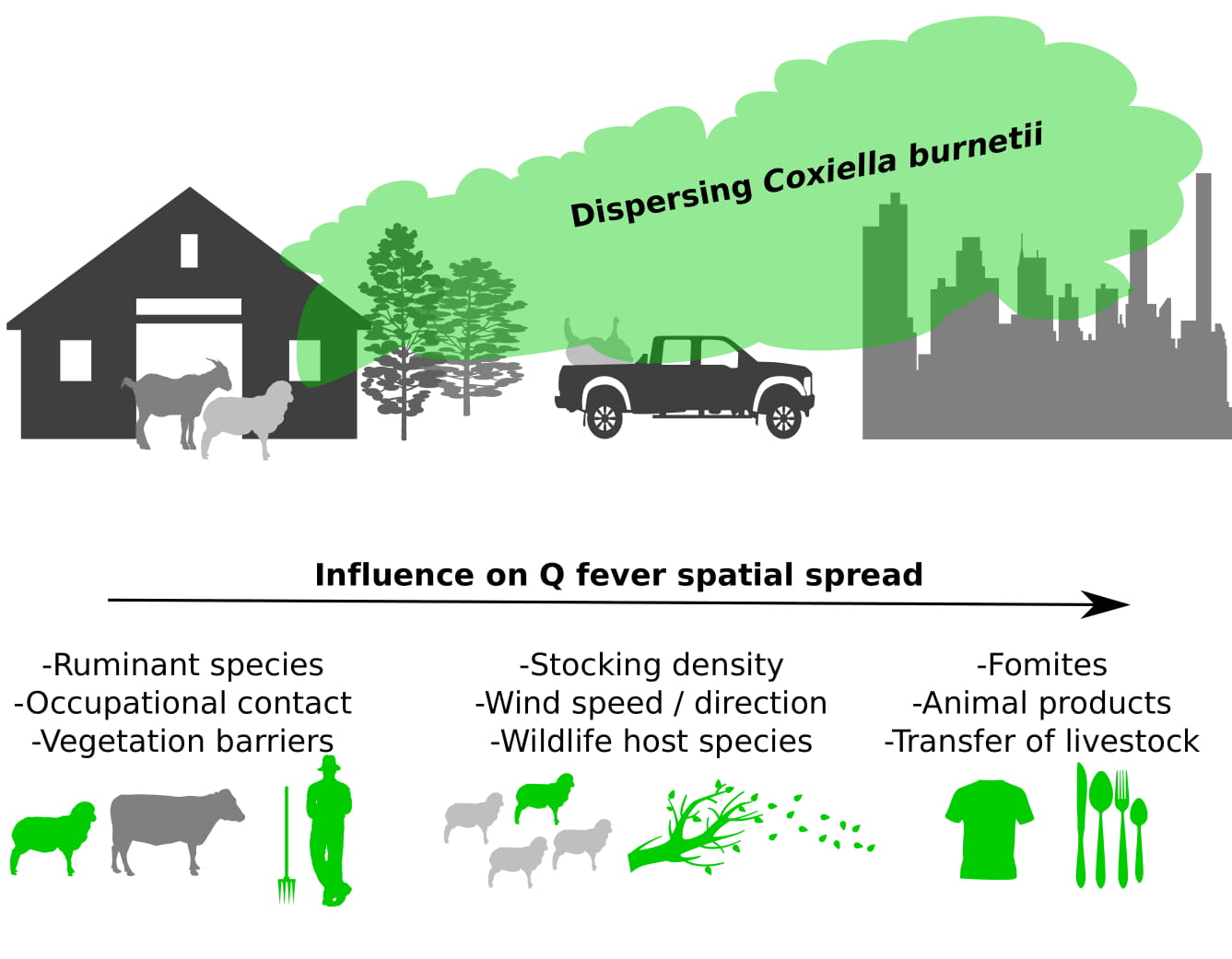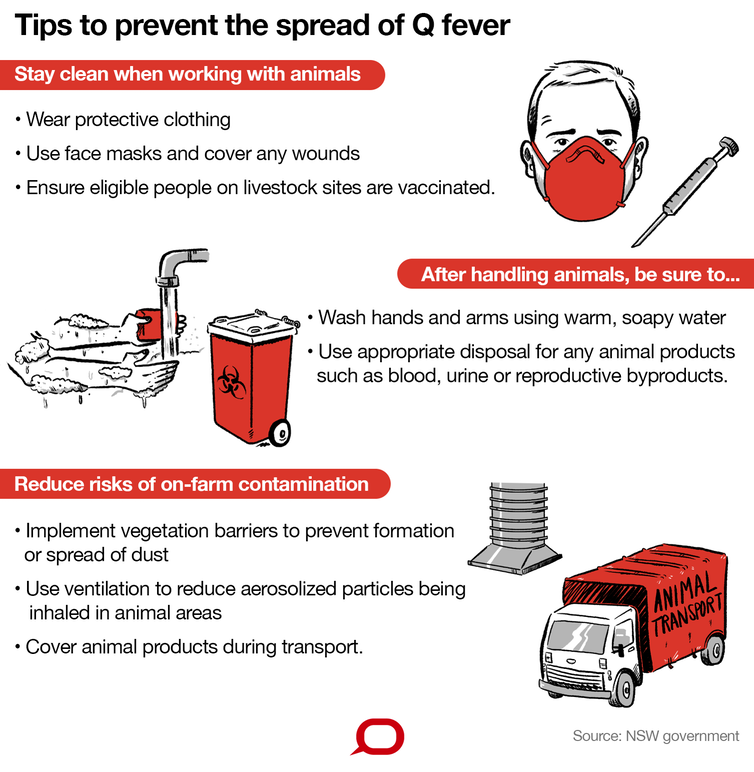Q Fever Biosecurity
Q fever: a zoonotic pathogen of high biosecurity risk

What is Q fever?
Coxiella burnetii in Australia

SpatialEpiLab’s involvement
1. Develop a better understanding of factors influencing the risk of Q fever spread within and between Australian ruminant livestock enterprises
2. Develop national guidelines for an emergency response plan to be used in the event of future Q fever outbreaks in humans. Read more about the project’s developments by following the Qfever_Group on Twitter.
Publications
Clark, NJ, Tozer, S, Wood, C, Firestone, SM, Stevenson, M, Caraguel, C, Chaber, AL, Heller, J and Soares Magalhães, RJ. 2020. Unravelling animal exposure profiles of human Q fever cases in Queensland, Australia using natural language processing. Transboundary and Emerging Diseases. DOI: https://doi.org/10.1111/tbed.13565.
Abeykoon, AMH, Clark, NJ, Soares Magalhães, RJ, Vincent, GA, Stevenson, MA, Firestone, SM, and Wiethoelter, AK. 2020. Coxiella burnetii in the environment: A systematic review and critical appraisal of sampling methods. Zoonoses and Public Health. DOI: https://doi.org/10.1111/zph.12791.
Clark, NJ and Soares Magalhães, RJ. 2018. Airborne geographical dispersal of Q fever from livestock holdings to human communities: a systematic review and critical appraisal of evidence. BMC Infectious Diseases. 18:218.
Clark, NJ, Caraguel, C, Heller, J, Soares Magalhães, RJ and Firestone, S. Australia’s drought could be increasing Q fever risk, but there are ways we can protect ourselves. The Conversation. March 12, 2019